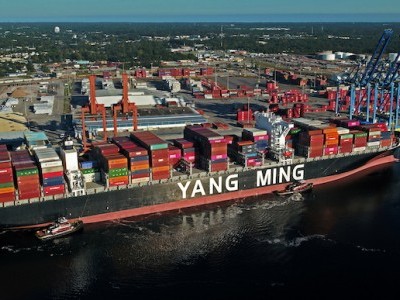Low carbon future for offshore vessel sector
Sep 14, 2020Fast growing offshore windfarms expect low carbon service operations by support vessels, but supplying and handling biofuels is a challenge and the development of ammonia and hydrogen powered vessels still has a long way to go, explains leading ship fuel broker and trader LQM Petroleum Services.
The global offshore wind industry continues to balloon, adding 6.1 GW capacity in 2019 and has continued to grow through the Covid-19 pandemic.
In Europe the sector has now reached a scale and size where the operational and contractual complexities are comparable to northern European oil and gas projects. The market primed for take-off in the Asia Pacific region and significant projects off the US coasts are coming onstream.
The pressure is now on the owners and operators of support vessels who play a critical role in the supply chain is to reduce emissions and ensure vessel reliability for the environmentally sensitive wind farm operators.
At an LQM webinar held last week on the offshore bunker markets, panellists including a bunker vessel operator, ship agent and bunker trader discussed the challenges of safe ship-to-ship transfers, the future fuel mix and the difficulties facing smaller bunker traders to supply reliable lines of credit to customers.
Ammonia, along with methanol, hydrogen fuel cells and batteries all have the potential to play their part in the powering of marine engines - but in the short term oil-price volatility could cause headaches for bunker buyers.
“Biofuels and LNG are the leading lower carbon choices at the moment,” said LQM broker James Hoffman, “I think the future will be a combination of green-tech and alternative fuels. There's no definitive silver bullet to this problem, rather more of a silver buckshot.”
Currently biodiesel enables vessel operators to reduce their carbon footprint by 20-30% without the need for engine modifications. However, the veg-oil derived fuel needs to be stored carefully, is easily contaminated and throws up challenges of lubricity and its flow properties need monitoring.
“We are able to source biofuel supply, but there isn’t as much availability as there is for gas oil, so we need to plan ahead.” said James Hoffman.
According to LQM Chief Executive Daniel Rose, the banking industry is “falling out of love with the bunker sector.”
However, he noted that the provision of credit for bunkers was one of LQM’s key value propositions but that a number of smaller bunker traders were exiting the sector.
Similar Stories

Stena RoRo takes delivery of the battery hybrid vessel Guillaume de Normandie
View Article
Indian Register of Shipping reflects on 2024 and sets ambitious goals for 2025
View Article
Yang Ming announces 2025 Trans-Atlantic services
View Article
Exclusive interview with AWO’s Jennifer Carpenter
View ArticleMSC GRI - scope: USA to Bahamas
MSC Mediterranean Shipping Company Co. (USA) Inc has filled and will implement a GRI with below quantum, scope, and effective date for all DRY and Reefer containers as follows:
View ArticleMSC GRI - scope: ISC/ME - Import Indian Subcontinent/Middle East to USA
Mediterranean Shipping Company has filed and will implement the following GRI - General Rate Increase effective January 20th, 2025, as below.
View ArticleGet the most up-to-date trending news!
SubscribeIndustry updates and weekly newsletter direct to your inbox!





